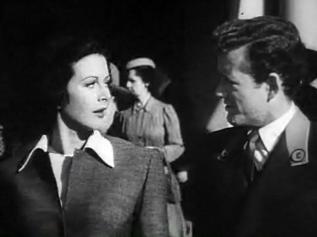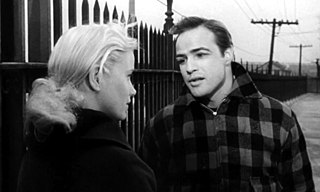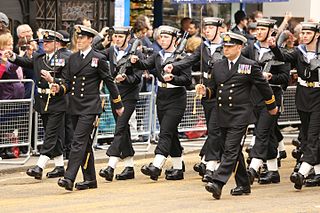
A jacket is a garment for the upper body, usually extending below the hips. A jacket typically has sleeves and fastens in the front or slightly on the side. A jacket is generally lighter, tighter-fitting, and less insulating than a coat, which is outerwear. Some jackets are fashionable, while others serve as protective clothing. Jackets without sleeves are vests.

Bell-bottoms are a style of trousers that become wider from the knees downward, forming a bell-like shape of the trouser leg.

Mess dress uniform is the most formal type of evening-wear uniform used by military personnel, police personnel, and other uniformed services members. It frequently consists of a mess jacket, trousers, white dress shirt and a black bow tie, along with orders and medals insignia. Design may depend on regiment or service branch, e.g. army, navy, air force, marines, etc. In modern Western dress codes, mess dress uniform is the supplementary alternative equivalent to the civilian black tie for evening wear. Mess dress uniforms are typically less formal than full dress uniform, but more formal than service dress uniform.

A blazer is a type of lightweight sport jacket. Originally a scarlet jacket worn in club or plain colours when boating or cricketing, the garment gradually lost its connection with sportswear from the 1930s onward to enter classic style, and the look came to be associated with the lifestyle of wealthy elites.
Keikogi (稽古着), also known as dōgi (道着) or keikoi (稽古衣), is a traditional uniform worn for training in Japanese martial arts and their derivatives. Emerging in the late 19th century, the keikogi was developed by judo founder Kanō Jigorō.

A bellhop, or hotel porter (international), is a hotel employee who helps patrons with their luggage while checking in or out. Bellhops often wear a uniform, like certain other page boys or doormen. This occupation is also known as a bellman and bellboy in North America.

A sailor suit is a uniform traditionally worn by enlisted seamen in a navy or other governmental sea services. It later developed into a popular clothing style for children, especially as dress clothes and school uniforms.

A Norfolk jacket is a loose, belted, single-breasted tweed jacket with box pleats on the back and front, with a belt or half-belt. It was originally designed as a shooting coat that did not bind when the elbow was raised to fire. Its origin is uncertain but it may have been named after Coke of Norfolk, the Duke of Norfolk, or after the county of Norfolk. It was made fashionable after the 1860s in the sporting circle of the Prince of Wales, later Edward VII, whose country residence was Sandringham House in Norfolk. The style was long popular for boys' jackets and suits, and is still used in some uniforms.

Mackinaw cloth is a heavy and dense water-repellent woolen cloth, similar to Melton cloth but using a tartan pattern, often "buffalo plaid". It was used to make a short coat of the same name, sometimes with a doubled shoulder. These jackets have their origins on the Canadian frontier and were later made famous by Canadian and American loggers in the upper Midwest as workwear during the mid-19th century logging boom.

A sport coat, also called a sport jacket, is a men's smart casual lounge jacket designed to be worn on its own without matching trousers, traditionally for sporting purposes. Styles, fabrics, colours and patterns are more varied than in most suits; sturdier and thicker fabrics are commonly used, such as corduroy, suede, denim, leather, and tweed.

The U.S. Army's M1943 uniform was a combat uniform manufactured in windproof cotton sateen cloth introduced in 1943 to replace a variety of other specialist uniforms and some inadequate garments, like the M1941 Field Jacket. It was used through the remainder of World War II and into the Korean War with modifications before being replaced by the OG-107 uniform beginning in 1952.

The uniforms of the United States Navy include dress uniforms, daily service uniforms, working uniforms, and uniforms for special situations, which have varied throughout the history of the navy. For simplicity in this article, officers refers to both commissioned officers and warrant officers.

Service dress uniform is the informal type of uniform used by military, police, fire and other public uniformed services for everyday office, barracks and non-field duty purposes and sometimes for ceremonial occasions. It frequently consists of a jacket, trousers, dress shirt, and neck tie, along with orders, medals, and insignia. Design may depend on regiment or service branch, e.g. army, navy, air force, marines, etc. In Western dress codes, a service dress uniform is a permitted supplementary alternative equivalent to the civilian suit—sometimes collectively called undress or "dress clothes". As such, a service dress uniform is considered less formal than both full dress and mess dress uniforms, but more formal than combat uniforms.

Workwear is clothing worn for work, especially work that involves manual labour. Often those employed within trade industries elect to be outfitted in workwear because it is built to provide durability and safety.

The Boys' Brigade is the largest Christian uniformed youth organisation in the United Kingdom and Republic of Ireland. The Boys' Brigade was founded in Glasgow, Scotland on 4 October 1883 by Sir William Alexander Smith, and celebrated its 125th anniversary in 2008. Today Felden Lodge in Hemel Hempstead, Hertfordshire serves as the main headquarters and England regional headquarters, while other regions have their own regional headquarters. Today the BB has in the region of 50,000 boys involved in about 1,400 companies ranging geographically from Shetland to Cornwall.

The uniforms of the Royal Navy have evolved gradually since the first uniform regulations for officers were issued in 1748. The predominant colours of Royal Navy uniforms are navy blue and white. Since reforms in 1997 male and female ratings have worn the same ceremonial uniform.

Breeching was the occasion when a small boy was first dressed in breeches or trousers. From the mid-16th century until the late 19th or early 20th century, young boys in the Western world were unbreeched and wore gowns or dresses until an age that varied between two and eight. Various forms of relatively subtle differences usually enabled others to tell little boys from little girls, in codes that modern art historians are able to understand but may be difficult for the layperson to discern.

A leather jacket is a jacket-length coat that is usually worn on top of other apparel or item of clothing, and made from the tanned hide of various animal skins. The leather material is typically dyed black, or various shades of brown, but a wide range of colors is possible. Leather jackets can be designed for many purposes, and specific styles have been associated with subcultures such as greasers, motorcyclists, and bikers, mobsters, military aviators and music subcultures, who have worn the garment for protective or fashionable reasons, and occasionally to create a potentially intimidating appearance.

School uniforms in England are worn in over 90% of primary and secondary schools in England. Parents are required to purchase the uniform which in 2015 averaged roughly £212.88 per child.

School uniforms in Sri Lanka were first introduced in the late 19th century. Today, school uniforms are almost universal in the Sri Lankan public and private school systems. All public and private schools maintains almost a singular uniform design in the color of white with few individual characteristics for boys and a few variation designs in white for girls.

















